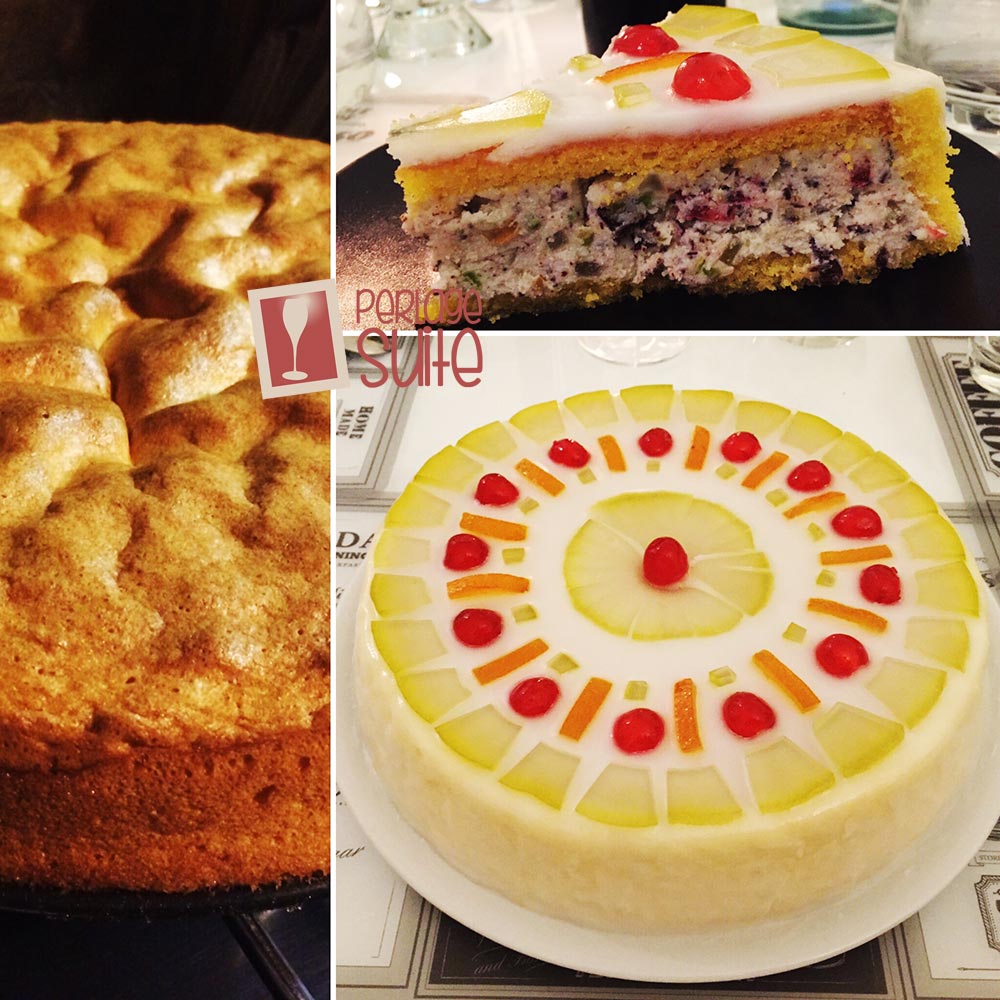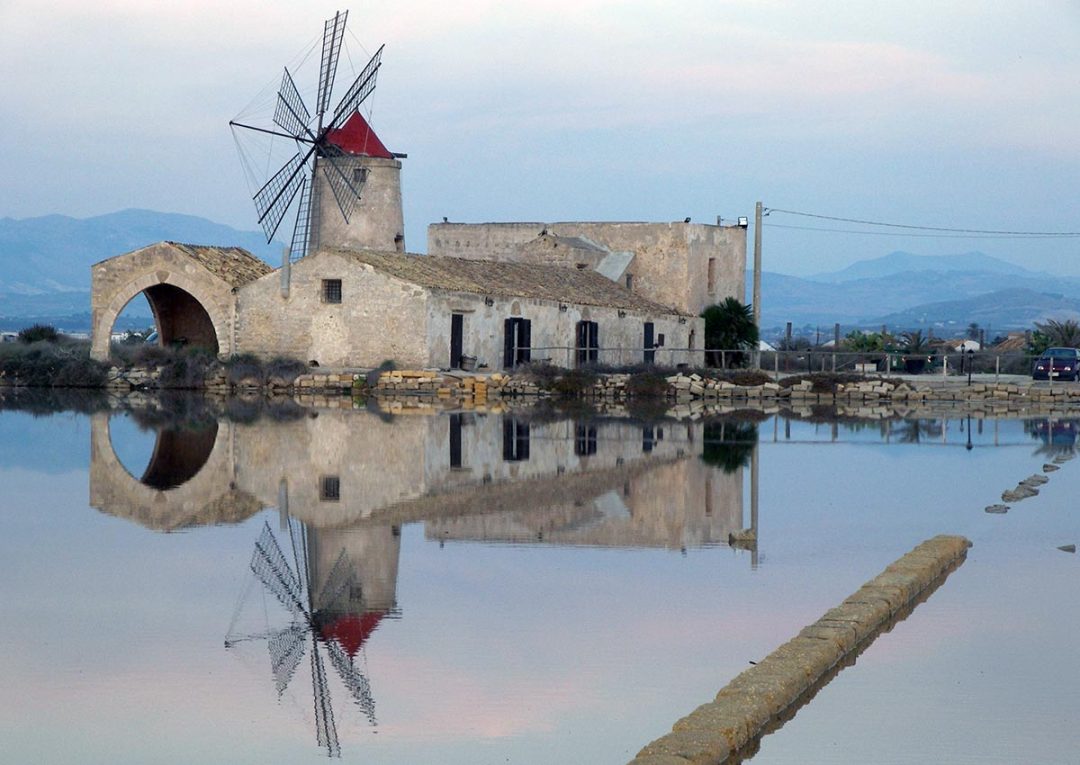I am very attached to the Sicilypartly because, after having visited every corner of Italy, I cannot find a place in Italy as amazing for its natural, artistic, gastronomic and human beauty, and partly because it was the birthplace of my Maestro, Franco Battiato. That is why today I have decided to tell you about the history of wine and vines and the cuisine of this land that I adore and to which I hope to return soon, also because one of the most precious friends I have had since high school, Gabriele Salamone, and his wonderful family, live there.
Last night I went with Francesco to the Arcimboldi Theatre, Milan listening Franco Battiato & Alice. Great concert, Battiato and Alice fabulous... Pity about the theatre, with good (but in my opinion not excellent) acoustics, but with really narrow seats, it looked like one of those old cinemas where you were very uncomfortable (it was inaugurated in 2002). The tickets, the last ones available at the beginning of January when I bought them, were literally in the pigeonhole (they call it high stalls, think of the poor people in the side gallery!)... €62 for a ticket? In Ravenna, for almost the same amount of money, I was in the second row... better not to think about it!
We are all, more or less, prisoners of our habits, fears, illusions.
Sufferings should induce us to abandon the ego, which closes the road back to our divine nature.
We human beings pride ourselves on free will and woe betide those who question this freedom.
But alas, this is not the case.
In reality, we are slaves to our emotions that determine us, to the desires that dominate us and often end in tragedy... beautiful freedom!
Liberation cannot have ties or attachments.
At night, when we dream, it all seems real.
Upon waking up, we discover that it was not.
Franco Battiato

But let's get back to talking about wine!
A brief history of Sicilian viticulture
La viticulture is present in Sicily since 2000 B.C., even before the landing of the Greek colonists who, however, had the merit of improving the quality of the vines and cultivation techniques. Wines were produced in abundance and with great results for the viticulture of the time, the most famous being Mamertino and Tauromenio, and wine alone supported the Sicilian economy.
Due to the Roman conquest around the dawn of the 2nd century B.C., the prosperity that had given the Sicilian region its excellent wine landscape disappeared: Rome forced the uprooting of vines in favour of wheat and turned the island into Rome's granary, with ruinous consequences. However, the Roman emperors had understood the goodness of the Sicilian wine product, so much so that Julius Caesar himself was a great drinker of Mamertino, and thanks to this, wine continued to be produced even if in modest quantities.
With the fall of the Roman Empire in 476 A.D. by the Emperor Odoacer (yes, I used to study a lot at school 😀 ) Sicily was subjected to various dominations: Vandals, Ostrogoths, Byzantines were, fortunately given the very heavy taxation they imposed on its inhabitants, swept away by the Arabs, who occupied it for about 2 centuries, restoring splendour to this magnificent region. It was thanks to them that agriculture experienced a new golden age, although these, due to their culture, concentrated mainly on rice and sugar, and vines were used to produce sultanas, of which the Arabs made great use.
The Normans, supported by the Pope, managed to drive the Arabs out of Sicily and it again became the scene of wars and poverty: the Angevins and Aragons did not benefit agriculture. Vine had a new rebirth around 1500 when Sicily came under Spanish rule, which brought the region brilliant growth and Palermo quintupled its population to become one of the 10 most populated, beautiful and rich cities in Europe... also thanks to the internal peace that Sicily had throughout this period. In these years, in the wake of the Arabs, the cultivation of sugar cane and silk was favoured and wine had a new splendour, to the point that it began to be exported all over the world! Unfortunately, however, Spanish domination also had a downside due to the strong social conservatism that Sicily still suffers from today and wrong economic choices. But such was its strength that it was able to rise again even after the great eruption of Mount Etna in 1669 that destroyed the entire area of Catania, and the earthquake of 1693, which has remained in history as the 23rd most catastrophic earthquake in the history of mankind, killing more than 60,000 people and wiping out about fifty towns between Noto and Catania. At 1.30 p.m. on 11 January 1693, there was an eleventh degree tremor on the Mercalli scale, which was followed by a tremendous tidal wave.
During these years, however, the vine continued its ascent and lively red wines appeared in the Syracuse area, alcoholic wines in the Trapani and Palermo areas, and light wines on the slopes of Etna, the very aromatic wines of the Aeolian Islands and Pantelleria... and the extraordinary wine that has made Sicily famous throughout the world: the Marsala!
Thanks to John Woodhouse, who around 1700 fortified the amber-coloured Marsala wine to make it survive the journey to England (as happened to another famous wine, the Porto!) there was a prosperous season for Sicilian wine, which helped the region overcome the seventeenth-century crisis and the natural disasters that had struck it.
Sicily passed for a very brief period under the rule of the Savoy and Austria, before returning to Spain in 1734 with the reign of the Bourbons. A century later came the greatest vine catastrophe of all time, the phylloxera, which around 1850 destroyed all vines in Europe with very few exceptions. Phylloxera was imported along with American vines and in fact these are the only ones that are genetically able to resist this dreadful pest. Unfortunately, phylloxera also arrived in Sicily and here too viticulture underwent a radical change: the feet of the vines were American, while the vegetative and reproductive apparatus was European.
Sicily is the largest island in the Mediterranean and the land is mostly hilly (61%), which greatly favours vine cultivation, which is threatened by the lack of natural water sources such as rivers, lakes and streams. The climate is Mediterranean, hot and arid on the coastal strip, temperate and humid in the central part and in the mountains. The influence of the sea creates heterogeneous climatic conditions that give rise to continuous local ventilation, greatly favouring vines, which need ventilation to remain healthy. Similarly, the Sirocco, which reaches 55° in summer, severely damages the vines due also to the drought it brings. Rainfall is only concentrated in the winter months and is only abundant in the higher areas of Mount Etna, the Hyblean Mountains and the Sicilian Apennines.
What grape varieties are cultivated in Sicily?
White grape varieties: Ansonica, Carricante, Catarratto or Catarratto Bianco Comune, Catarratto Bianco Lucido, Damaschino, Cricket, Inzolia, Malvasia di Lipari, White Minnella, Zibibbo
Black grape varieties: Calabrese, Black Corinth, Frappato or Frappato of Italy, Mondeuse, Nerello mantellato, Nero d'Avola, Perricone, Pignatello, Shiraz
Sicilian cuisine

The Sicilian cassata that Dad made for me at Christmas... isn't it spectacular?! A little recipe soon 😛
Sicilian cuisine is the product of all the dominations that have succeeded one another on the island; it is rich and scenic, and a source of attraction for tourists from all over the world. The most famous are the Cassata Siciliana (which Gabriele says they only eat outside Sicily... but I like it anyway and he could tell you how I ate a whole one in Ragusa Ibla... the photo at the top of the article is Ragusa Ibla and we took it together, his cousin Martina was there too!) and the Sicilian cannolo... both made with ricotta cheese because Sicily has a ricotta cheese with a truly crazy tradition and these two sweets have Greek origins! Martorana fruit is scenic and delicious for all almond paste lovers! Other typical Sicilian dishes are pasta alla Norma, made with tomatoes, salted ricotta cheese and fried aubergines (it can be degreased with a fresh Grillo)... pasta with sardines, sardines a beccafico, aubergine caponata, aubergine parmigiana... Even in street food, Sicily has really tasty products: just think of Palermo's bread and panelle and rice arancini! I could go on for hours talking about Sicilian cuisine, but I want to focus on the ingredients that for me characterise it most:
- sardines
- aubergines
- cottage cheese
- almonds and almond paste
sardines and aubergines are often fried and for this a degreasing wine can be very useful, so I would go with a local metodo classico such as Tasca D'Almerita Spumante Extra Brut or with a spumante metodo classico based on Neretto mascalese such as Cantina Patria's Pàlici. As for ricotta and almond paste, they are almost always accompanied by a hefty dose of sugar in the preparation of exquisite desserts, so I would say Mozia is perfect.
Never forget that Sicily has the finest Bronte pistachios and candied fruit in existence... and for these a Marsala goes well together!
Which Sicilian wine you absolutely cannot miss?
The 'Mothia' or 'Mozia' of the island of San Pantaleo.
 Also called Phoenicians' Wine, reproduced from an old Grillo grape vineyard on the island-city founded by the Phoenicians at the end of the 8th century B.C., located at the north-western tip of Sicily, almost opposite Marsala, where the sea forms a lagoon called Stagnone di Marsala (a nature reserve since 1984), rich in salt and iodine and described as a true fishing paradise. Overripe and dried grapes are vinified with indigenous yeasts. The wine is then matured in small cement vats in an attempt to reproduce the ancient maturation of terracotta vases. The Phoenicians were known to produce Canaan, a sweet and spicy wine, and archaeological excavations have revealed the holes left by vine cultivation in those centuries. This ancient wine is sweet but not cloying and smells of dried figs, honey and pistachios.
Also called Phoenicians' Wine, reproduced from an old Grillo grape vineyard on the island-city founded by the Phoenicians at the end of the 8th century B.C., located at the north-western tip of Sicily, almost opposite Marsala, where the sea forms a lagoon called Stagnone di Marsala (a nature reserve since 1984), rich in salt and iodine and described as a true fishing paradise. Overripe and dried grapes are vinified with indigenous yeasts. The wine is then matured in small cement vats in an attempt to reproduce the ancient maturation of terracotta vases. The Phoenicians were known to produce Canaan, a sweet and spicy wine, and archaeological excavations have revealed the holes left by vine cultivation in those centuries. This ancient wine is sweet but not cloying and smells of dried figs, honey and pistachios.
And then I love the Marsala to have chosen Pantone Marsala for the Perlage Suite 😉
Thanks to Sicily for being so beautiful, even with its contradictions.
See you soon
Chiara
P.S. The thing I remember most from my last Sicilian stopover was when with Gabriele (aka Salem) we went to the pastry shop in Chiaramonte Gulfi whose name I can't remember (I hope Salem will help me with a comment) to fill the brioche at 4 a.m. with ricotta cheese with chocolate and cinnamon chips and I filled it so full that the pastry exploded on me 😀
P.P.S. I recommend that if you are in the area, go eat at U Dammusu (Like us in the Facebook page to keep up to date!)... having eaten there for days with Gabriele (I can't tell you the spectacle of these dishes that magically arrived at home straight from the restaurant downstairs...) I must say that it deserves it and, from the new photos, they have improved even more... so I can't wait to go back, maybe even with Francesco who, when he saw their giant 'Brontosaurus' steak on Facebook, had tears in his eyes!


